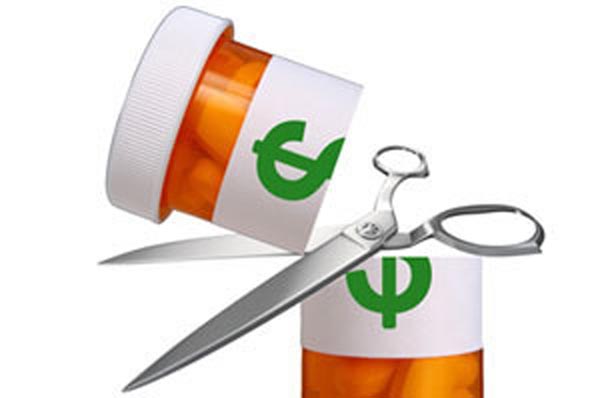Americans are feeling the sticker shock for a prescription drug at their local pharmacy. In the past year, the price of many generics are spiraling upwards drawing the attention of Congress and pinching the wallets of consumers.
“We are talking about the need of the American people to be able to afford the medicine that their doctors prescribe,” U.S. Sen. Bernie Sanders (I-Vt.), Democratic Presidential candidate and chairman of a Senate health care subcommittee.
What’s the problem?
- Many adults take at least one prescription drug
- It’s not uncommon for older people to be on 5 or more medications, according to the Centers for Disease Control and Prevention.
- The way our healthcare system is set up, it can be tough to comparison shop from one pharmacy to another. Even your doctor may not know what you’ll end up paying for a prescription.
- 1 in 5 new prescriptions that are written are never filled. Without insurance, the cost may feel so exorbitant you may be tempted to skip or skimp on medication. Skipping medication can be disastrous and ultimately more costly than the drugs themselves.
- Has the cost of your medication changed? Check out this database which tracked 2,400 medications.

9 ways to reign in the cost of prescription drugs
- Purchase from Warehouses – Costco and Sam’s Club pharmacies are open to non-members where required by State law. Check with your local warehouse. Many prescriptions are substantially cheaper through warehouses, so this can be a real boon to your budget. Surveys indicate you can save anywhere from 25 to 77% on many prescriptions at a warehouse. For example, 30 pills that cost $40 at CVS may run just $10 to $12 at Costco. Check the cost of your prescription at Sam’s Club or Costco. If you are a member of Sam’s Club, you can enjoy additional benefits by joining their Free Rx Program. Walmart, Target, and other large retailers offers hundreds of prescriptions for $4 for a 30-day supply.
- Talk to your doctor about your formulary prescription – Depending on your insurer’s formulary (a list of medications that are covered), the co-pays for two similar drugs such as Crestor or Zocor to treat cholesterol may be wildly different. To avoid paying for the pricier drug, you need options. When your doctor prescribes a new drug, ask him or her to list the top three choices. Check with your insurer to find out the co-payment on each, and any formulary restrictions that might apply. Then discuss the best options with your doctor.
- Generics – Any quest to save money on medications should start with a conversation with your primary care physician or specialist. Ask your doctor if there’s a generic medication that can be provided instead of a brand name product. The cost of a generic drug is 80% to 85% lower, on average, than brand name products, according to the U.S. Food and Drug Administration. AARP also offers a drug savings tool. Just enter in the name of the drug you take, the reason why you’re taking it, and the tool produces a list of similar, less-costly alternatives. Patients can then print the list and discuss their options with their physicians.
- Ask your doctor for samples – Before you fork over the cost of a month’s supply of a drug, you want to know if you can tolerate it. If it’s a brand-name drug, your doctor will likely have samples. Ask for 30 day supply so you can try it before committing. Some doctors may even help assist you on an ongoing basis if the medication cost becomes too prohibitive. It doesn’t hurt to ask.
- Pharmaceutical manufacturers’ free trials/coupons – Manufacturers often will offer a free 30-day trial or a coupon for a discount on the purchase of the drug. Be aware, though, that many of the coupons are for more expensive medications.
- Money saving coupons/Prescription savings cards – If you do not have a prescription drug plan or a prescription medication is not covered by your insurance drug plan, check out these sites for some money saving coupons: Optimizerx.com, InternetDrugCoupons.com, GoodRx.com, and Drugs.com
- Drug company patient assistance programs – Don’t give up hope if you can’t afford the drug your doctor prescribed. Even if you don’t qualify for state or federal discount program, or if coupons aren’t cutting it, you may still be eligible to receive a drug for free or at minimal cost. Many pharmaceutical manufacturers have so-called patient-assistance programs to help uninsured and low-income individuals. To search by drug name or pharmaceutical company, check out RxAssist, a patient-assistance program.
- Consider over the counter alternatives – In some cases, an over the counter medication may work just as well as a prescription drug at only a fraction of the cost. For example, if the doctor prescribes a drug for allergies, ask him/her if you can instead take Allegra, Claritin, Zyrtec or another medication available on pharmacy shelves. Keep in mind, however, that health insurance plans do not generally cover over the counter medications, so a prescription version might end up being less expensive than one you buy on your own. Compare the costs.
- On-Line ordering – There are many on-line pharmacies that are less costly. If you order prescription drugs online, make sure the site is VIPPS-certified.
Happy hunting. Where ever you find the best bargains, medical professionals recommend that you try to order all your drugs from the same pharmacy so they can keep track of potentially risky drug to drug interactions.
